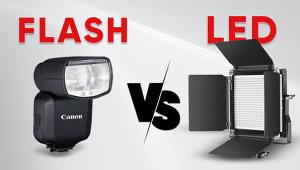The Mecaflex; A Square Format 35mm SLR Page 2
 |
|
|
As the aperture ring reaches its widest setting a quiet click indicates that
a small lever beneath the lens has been moved very slightly to one side, allowing
a pin to spring out from the body and block its return. Now, when the f/stop
required for taking the picture is reset on the control ring around the lens,
the actual aperture remains wide-open for easier focusing. As the picture is
taken, however, first pressure on the shutter release retracts the pin, allowing
the lever to move back and causing the aperture setting to spring to its preset
aperture, just before the mirror flips up and the shutter fires. It then remains
at this smaller aperture setting until the whole sequence is repeated for the
next picture.
The shutter is not a focal plane type that you would expect in most 35mm SLRs.
It is a Prontor with X and M synchronization for electronic and bulb flash respectively,
using an iris, set into the camera body, behind the lens. As the film is wound,
the mirror is lowered and the iris opens to bring an image to the viewfinder,
while the lowered mirror blocks light from the film. As the exposure is made,
the mirror springs up and the iris closes, between them giving the required
shutter speed.
The lens is interchangeable with a bayonet fitting, released by moving a small
lever below the lens from a five o'clock setting to seven o'clock.
The Mecaflex is usually found with a 40mm f/3.5 Kilar lens, but sometimes with
the rarer 40mm f/2.8 Kilar and, if you are very lucky, with the even rarer 105mm
f/4 Tele-Kilar. Extension tubes were also available.
 |
|
|
With a few exceptions, single lens reflexes of the early '50s were mostly
built with waist-level, rather than eye-level, viewfinders and the Mecaflex
was no exception. It was, however, unusual in offering a now very rare accessory
viewfinder that fit over the ground-glass screen to convert the camera for eye-level
viewing.
This is little more than a small metal box which is pushed into the hood to
rest on top of the focusing screen. Inside is an angled mirror and set into
one side is a lens in an eyepiece. It doesn't attempt to correct the laterally
reversed image on the screen the way a penta-prism would and if the camera is
held vertically, the image turns upside down as with any waist-level reflex.
The resulting image is dim but adequate when the light is bright.
Today's value is around $1500 for the chrome and black camera with standard
lens, more like $2000-$2500 for the lizard skin version, and around $750 extra
for the tele lens, if you can get one on its own. I've only ever seen
them for sale with the camera and a seller reluctant to part them.
- Log in or register to post comments

































